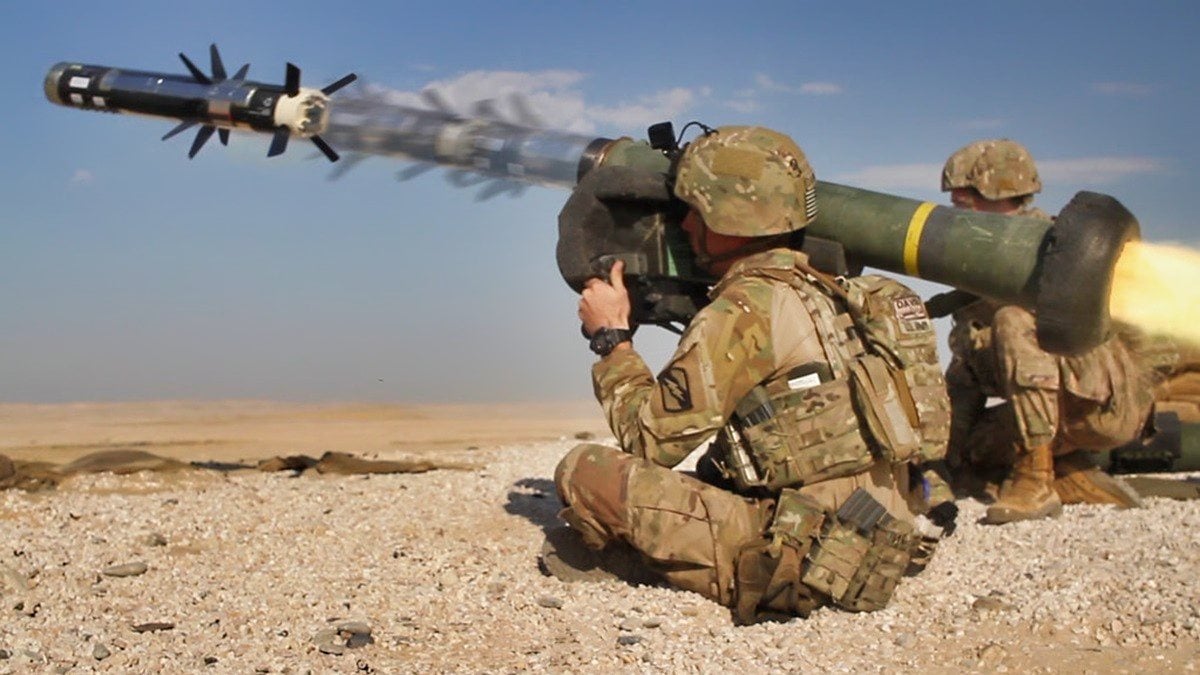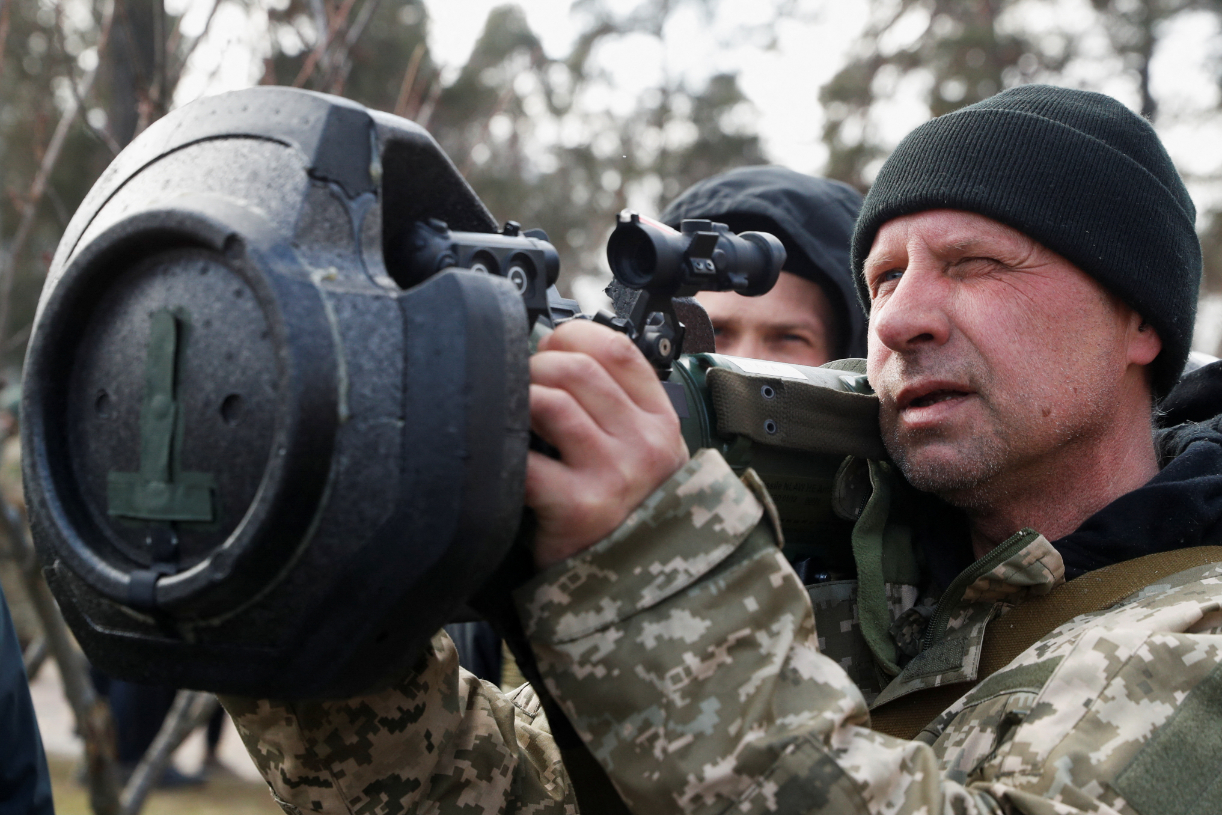Javelin: The Anti-Tanks Missile That Went to War in Ukraine and Smashed Putin's Tanks
The Javelin anti-tank missile system has demonstrated exceptional performance in Ukraine, attracting interest from new potential clients like India.
Summary and Key Points: The Javelin anti-tank missile system has demonstrated exceptional performance in Ukraine, attracting interest from new potential clients like India.

-Last month, New Delhi and Washington discussed co-producing these American-made missiles, driven by the Javelin's success in Ukraine. Developed during the Cold War and deployed in the mid-1990s, the Javelin is a fire-and-forget weapon, allowing operators to remain undetected after launch.
-This portable system can penetrate thick armor, making it effective against main battle tanks and armored vehicles. Despite initial challenges, Ukrainian troops have effectively used Javelins to counter Russian advances, solidifying its reputation as a critical defensive tool.
Javelin Missiles: From Cold War Concept to Ukrainian Battlefield Hero
The Javelin anti-tank missile system has performed phenomenally in Ukraine, spurring interest from new potential client states.
Last month, New Delhi and Washington held joint talks for the co-production of these American-made missiles. While the Indian Army has wanted to acquire modern anti-tank guided-missile (ATGM) systems for quite some time, its interest in the Javelin is likely tied to the weapon’s stellar role aiding Ukrainian troops. For nearly two years, this man-portable, “fire-and-forget” ATGM system has helped Ukraine take out main battle tanks, armored vehicles, and large fortifications.
The history of the Javelin
First conceptualized during the Cold War, the FGM-148 Javelin was designed under DARPA’s “Tank Breaker” program. The U.S. Army required a replacement for its M47 Dragon anti-tank missile system, which was not performing up to standard. The service eventually awarded a development contract to a joint venture of Martin Marietta and Texas Instruments.
The Javelin would not begin deploying with infantry units until the mid-1990s, however, due to several hiccups discovered during the ATGM’s testing phase. In 1997, the Department of Defense approved the Javelin for full-rate production.
How his incredible ATGM system works
As a fire-and-forget weapon, the Javelin enables its operator to remain undetectable after launch. The gunner can take cover and avoid counterfire, increasing chances of survival.
As described by Lockheed, “Using an arched top-attack profile, Javelin climbs above its target for improved visibility and then strikes where the armor is weakest. To fire, the gunner places a cursor over the selected target. The Javelin command launch unit then sends a lock-on-before-launch signal to the missile.”
This ATGM measures roughly 1.2 meters in length and weighs 22.1 kilograms, making it small enough to be easily transportable. While developed to be a shoulder-fired weapon, it can also be mounted on wheeled or tracked vehicles. Notably, the ATGM requires a mere 72 hours of classroom training for proficiency. According to the Center for Strategic and International Studies, this is a significant improvement from the M47 Dragon, which required 10 days of training.
The Javelin’s greatest use is arguably against main battle tanks and armored vehicles. Once the missile is launched from the Javelin, it travels at a rate of 1,000 feet per seven seconds while being guided by an infrared seeker. The first of two high-explosive warheads explodes against the reactive armor, enabling the second warhead to reach the target’s main armor. According to Military Times, the ATGM’s warheads are capable of penetrating steel between 23.5 and 31.5 inches thick.
The Javelin’s role in Ukraine
Ukrainian officials considered the lethality of the Javelin ATGM prior to Russia’s invasion. In fact, Kyiv had already purchased 210 missiles and 37 launchers in 2018, followed by another order two years later for $150 million. Clearly, Ukraine is getting its money’s worth. Ukrainian troops have used Javelins to decimate Russian tanks and thwart the advance of troops.

Although the Javelin was rightfully nicknamed the “Protector of Ukraine” for its outsized role in protecting the country, it initially experienced some trouble shooting in the war. In 2022, a Washington Post report detailed how many of the thousands of Javelins provided to Ukraine by the Pentagon at the time were deemed inoperable due to the absence of training modules, spare batteries, and other essentials required for proper training. Ultimately, Kyiv received the intel necessary to better use these weapons, and the Javelin has remained a critical component of the country’s defensive strategy.
About the Author: Defense Expert Maya Carlin
Maya Carlin, National Security Writer with The National Interest, is an analyst with the Center for Security Policy and a former Anna Sobol Levy Fellow at IDC Herzliya in Israel. She has by-lines in many publications, including The National Interest, Jerusalem Post, and Times of Israel. You can follow her on Twitter: @MayaCarlin.
All images are Creative Commons.


